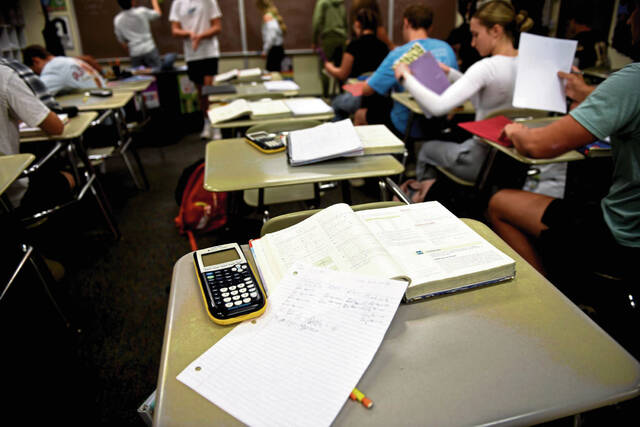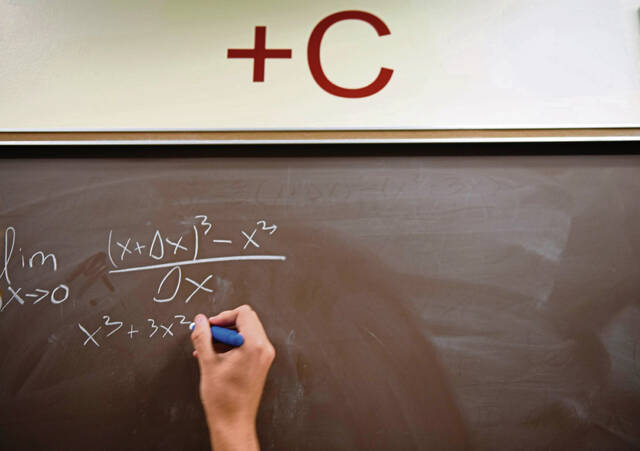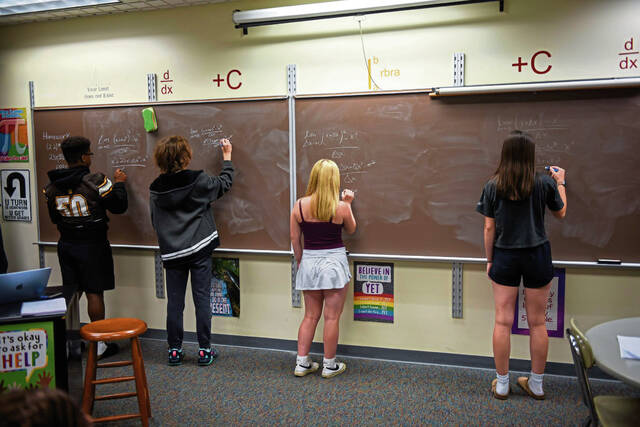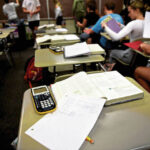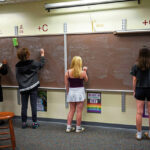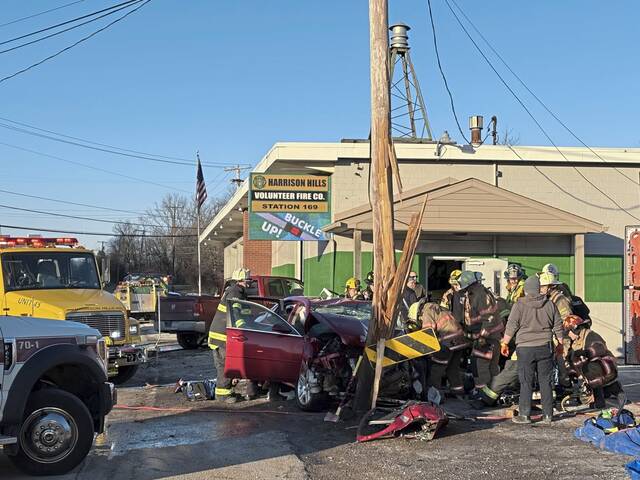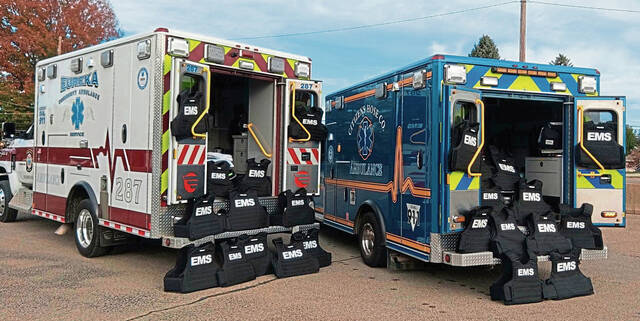Some Western Pennsylvania educators are pushing back on a national report indicating a decline in math and reading test scores among high school seniors.
The report, released by the National Center for Education Statistics, has circulated through K-12 education sectors in recent weeks, raising concerns about seniors’ math and reading comprehension. But not all educators believe the report is a true reflection of decreased learning.
Franklin Regional School District saw a dip in scores on the Pennsylvania System of School Assessment and Keystone Exam during the covid-19 pandemic — a decline that has since been reversed, said Superintendent Gennaro Piraino.
But the way Piraino sees it, the pandemic had a secondary effect on state testing — specifically how it is viewed, by students and educators alike.
“Our families, as well as our staff and our community, have realized that the assessments don’t measure what our kids have to know, understand and be able to do,” Piraino said. “We’ve put a greater focus on those skills that are universal, that they’ll need to go out into the world.”
By the numbers
The National Center for Education Statistics, which operates under the U.S. Department of Education, has administered the National Assessment of Educational Progress since 1969.
The assessment is given to a sample of students from randomly selected schools throughout the country. The Nation’s Report Card details the results.
Reports for elementary and middle school students were released earlier this year.
Seniors from about 1,500 schools nationwide were assessed between January and March 2024. About 24,300 were tested on reading and 19,300 were assessed in math.
Average reading and math scores for seniors were each three points lower than in 2019 — the last time the assessment took place.
The percentage of seniors achieving proficient or higher scores in reading and math also dropped from 2019 to 2024. The portion scoring below basic increased.
The Nation’s Report Card represents a sample of students. But a similar trend is observed in the Algebra 1 and literature Keystone exams administered in all 500 of the state’s public school districts, typically to students in grades 8 to 11.
About 63% of Keystone exam takers scored proficient or above in literature in 2024 — down about 8.5% from 2019, according to the Department of Education. While 12% scored below basic in 2024, about 9.5% achieved that score in 2019.
About 41.5% scored proficient or above in Algebra 1 in 2024, which falls in stark contrast to the nearly 63.5% who achieved that score in 2019. Nearly 20% scored below basic in 2024 — almost double from 2019.
Educators identify flaws in national report
Piraino is not ignorant to the numbers. But he also recognizes gaps in the standardized assessment process.
For example, more than half of the districts’ students take the Algebra 1 Keystone Exam in eighth grade, and the vast majority — nearly 99% — achieve a proficient score. Some of those same students, Piraino said, don’t achieve a proficient score on the PSSA test that year.
And it’s not because the students aren’t intelligent and driven, Piraino said. Learning Algebra has simply shifted their focus away from the content tested in the PSSA.
“You might not have touched that material for over a year, and you’re going back and taking that assessment,” he said.
Tyler Vargo, principal of Leechburg Area High School, takes the 2024 Nation’s Report Card with a grain of salt.
The report, he said, loses some of its reliability by comparing the test results of two different groups of students — the class of 2019 and the class of 2024.
Seniors may also have different goals from one another, as they prepare to enter college, trade school or the military after graduation.
“The math skills of a kid who wants to pursue something … in calculus might be a little bit different than somebody who may not be interested in something that is heavily (involved) in math,” he said. “It’s really hard to say for a senior what skills are lacking or challenging, just because they’re in different areas and going into different directions.”
New Kensington-Arnold Superintendent Chris Sefcheck is not convinced the Nation’s Report Card is applicable to the entire country.
The report surveyed students at about 1,500 schools. There were more than 90,000 public schools in the country in 2020-21, according to the National Center for Education Statistics.
“My background is in science. I would question the reliability of the results first,” Sefcheck said. “Not to say that they do a poor job of assessing, but is the sample size large enough and does it represent a broad range of diverse students?”
Regardless of the report’s reliability, it is just one tool to measure student performance, Sefcheck said.
“This is a test score analysis. If you go the doctor and you get a blood test and your iron level is low, does that really give an indication that you’re healthy or unhealthy?” he said. “No, one test does not tell you if you’re healthy or sick. You have to get a complete physical.”
Views shift on standardized testing
Today, Franklin Regional rarely incorporates state testing-specific preparation into its curriculum, Piraino said.
“Imagine giving a senior a test that has no relevance to their lives,” he said. “How they do on that test doesn’t matter to them, and they’re just going to get it done.
“I don’t think there’s a lot of seriousness when it comes to that type of assessment. And, to be honest with you, I don’t think our kids find the PSSA or Keystone exam to be relevant, either.”
Greensburg Salem’s high school students are not shy about sharing these frustrations with their teachers, said Superintendent Ken Bissell.
“The biggest thing that kids ask now that they may not have asked even 20 years ago is ‘What’s in it for me?’ ” Bissell said. “When they take an SAT, most often they know that there’s something in it for them — that it could lead to getting them into a college or not getting into a college.
“When our students at (career and technical centers) take industry-based testing, they know that could lead to a job or land them into a career field. But when they start getting things now, for instance, like the (National Assessment of Educational Progress), and they say, ‘What’s in it for me?’ then apathy could kick in.”
Bissell suspects learning loss sustained during the pandemic and increasing chronic absenteeism also may have skewed the latest Nation’s Report Card. But with the volume of standardized testing students face, students’ attitudes toward such exams cannot be ruled out, he said.
Burrell School District Superintendent Shannon Wagner doesn’t believe standardized testing is the best way to determine a student’s success later in life.
“It’s a ‘one point in time’ thing, and it doesn’t demonstrate the over-time changes in the whole child,” she said.
Burrell places an emphasis on lifelong learning, Wagner said. Half of this year’s senior class signed up for the district’s Senior Seminar course, which gauges a student’s interest in various careers and advises them on paths they could take in those professions.
“You have to be able to take your skills and continue to learn, to remain relevant in your field,” Wagner said.
Higher education is also changing its stance on standardized testing.
Though many colleges and universities have reinstated SAT or ACT test score requirements for admission in recent years, several schools statewide remain test-optional — a standard set during the pandemic.
Penn State, Pitt, Indiana University of Pennsylvania and PennWest do not require the exams, according to their admissions websites.
Carnegie Mellon, Seton Hill, St. Vincent and Slippery Rock require SAT or ACT scores only for select degree programs.
Districts opt for state testing alternatives
Greensburg Salem has been selected to participate in the National Assessment of Educational Progress only once in the past five years, Bissell said. But students each year are tasked with the PSSA or Keystone — depending on grade level — and the district’s internal assessments.
For the past three years, Greensburg Salem has used diagnostic testing to evaluate students — including the state education department’s Classroom Diagnostic Tools assessment and the Northwest Evaluation Association’s MAP Growth test.
The exams are administered at the beginning, middle and end of the school year, tailoring questions based on the students’ performance level. If a student answers a question correctly, they may be presented with a more difficult one next — and vice versa.
Unlike the PSSA and Keystone, which return results several months after the exams were taken, diagnostic tests churn out data instantly — allowing teachers more time to adapt their curriculum to meet students’ needs.
“If we’re paying for those summative tests like the Keystone and PSSA, but then districts are also paying for their own benchmarks, the question comes up: Are we using the wrong (assessment)?” Bissell said.
“We want to be held accountable, but are we using the right measures to hold us accountable? Are we overpaying for too many assessments?”
Franklin Regional uses a similar diagnostic test called the STAR Assessment, created by Renaissance Learning.
The Pennsylvania Association of School Administrators is pushing for a better student evaluation system, said Piraino, president of the organization’s board of governors.
“We assess kids more now than we ever have,” he said. “We know how they’re doing in terms of what matters, and the state assessment just doesn’t make a difference. We get the data back so far after they take it, you really can’t do any type of remediation, and the material on that assessment may or may not match the local curriculum.”


